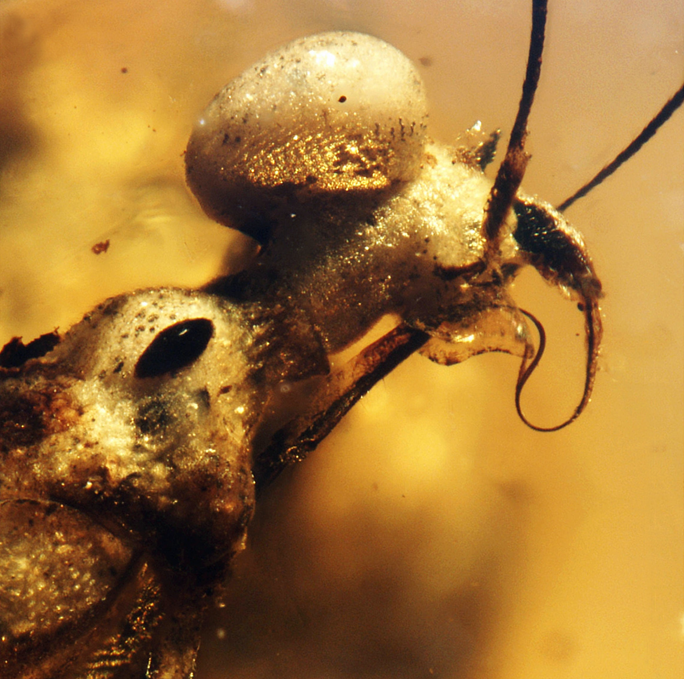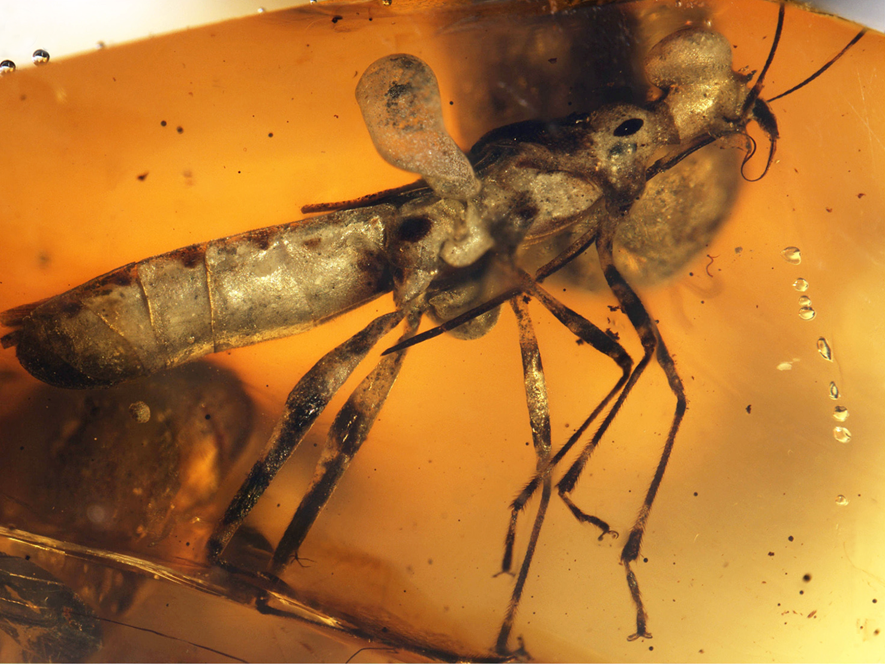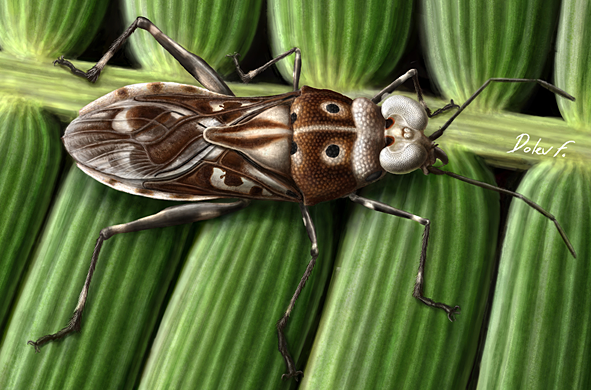Getting your Trinity Audio player ready...
In a discovery reminiscent of a Jurassic Park discovery, but with fleas instead of dinosaurs, scientists have unearthed a new flea species encased in amber. This ancient insect, which lived alongside dinosaurs roughly 99 million years ago, has been revealed in a study by Dolev Fabrikant from the Hebrew University of Jerusalem and Dr Tania Novoselsky, Hemiptera collection manager at The Steinhardt Museum of Natural History, Israel National Center for Biodiversity Studies at Tel Aviv University, and published in the Israel Journal of Entomology.
3 View gallery


Miropictopallium coloradmonens that was Crystalized in amber
(Photo: Dolev Fabricant)
This is not an everyday bug. The vivid and distinct coloration of Miropictopallium coloradmonens, as the species has been named, stands out dramatically against the typically pale, yellowish-brown color of most ancient insects preserved in amber. What's more, this striking coloration is thought to have acted as a predator deterrent – a sort of ancient bug's version of a superhero cape.
The discovery was facilitated by a piece of amber that surfaced at a public sale, typical of those found in Myanmar markets, suggesting not just a scientific breakthrough but also a peek into the commercial journeys of such ancient remnants. This bug isn't just a scientific anomaly; it raises questions about its family's historical range. Were these colorful creatures once local to areas far beyond Myanmar, perhaps even in regions like ours today?
The mid-Cretaceous period, a time of hot and humid conditions on Earth, saw an explosion in insect diversity, with many species growing larger and more unique than ever before. The climatic conditions of the era were ripe for fostering a vast array of insect life, a fact underscored by the thousands of insect species from this period already discovered. Yet, as the climate shifted and competition increased, many of these species vanished from the Earth.
3 View gallery


Miropictopallium coloradmonens that was crystalized in amber
(Photo: Dolev Fabrikant)
Understanding the story of the Miropictopallium coloradmonens not only paints a richer picture of the past biodiversity but also helps scientists project the future. Knowledge of how species like this ancient bug adapted (or didn’t) to changing environments provides invaluable insights into the resilience and survival strategies of species facing today's challenges, such as global warming.
Studying insect fossils is pivotal for unraveling the narrative of life on Earth and understanding how environmental shifts impact biodiversity. These ancient remains offer insights into the evolutionary journey of insects, the dynamics of bygone ecosystems, and the interactions between insects and other forms of life, such as plants and animals. Moreover, this type of research is essential for grasping the ramifications of contemporary climate changes on biodiversity and the planet's future.
"The new insect enriches our comprehension of the present world by providing insights into a significant transitional era in the history of life on land. Its era was marked by a surge in biological diversity and the inception of what would become modern ecosystems," Fabrkant explained.
Dr. Novoselsky added: "This newly discovered insect opens a fascinating chapter on bug evolution and offers fresh perspectives on life during the mid-Cretaceous period. Our findings deepen our understanding of insect diversity and evolution during that time and underscore the significance of studying amber fossils in paleontological research. The exceptional preservation of this insect allowed us to meticulously examine its morphology and identify several distinctive features that set it apart from other amber-preserved insects, such as its enormous eyes that dominate its head and its vibrant coloration."
First published: 12:09, 04.24.24


